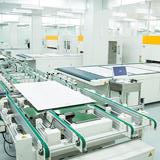

The choice of screen printing ink must be adaptable to the printing equipment and environment. It must have both good printability and excellent performance.
1. Dryness
The requirement of screen printing for drying performance is: the ink can not dry the conjunctiva for a long time on the screen plate, and after printing, it is required to dry as much as possible on the substrate. When multi-color continuous overprinting, the drying performance of the screen printing ink is more demanding.
2. Wire drawing
Due to the large molecular weight and strong viscosity of the binder in the ink, when the printing plate is lifted, the phenomenon that many ink filaments appear on the back of the screen is called wire drawing. This is a relatively taboo phenomenon in screen printing. It not only makes the printed matter and the screen dirty, but even makes the screen printing impossible. Therefore, the screen printing ink is required to have the basic performance of no wire drawing during the printing process.
3. Fineness
Fineness indicates the size of pigments and other solid material particles in the ink, and also indicates the uniformity of the distribution of these particles in the binder. The fineness of screen printing ink is generally between 15 and 45um. If the fineness is too large, paste will be produced during printing and no pattern will be printed. If the screen is thicker, the fineness can be increased accordingly. Generally, the coarser particles should be less than a quarter of the mesh area.
4. Plasticity
Plasticity refers to the property that it can completely or partially maintain its deformation after being deformed by an external force. Screen printing ink is a thick suspended colloid between fluid and semi-solid, so it has both fluidity and plasticity. If the content of pigments and other solid materials is low, the ink will be thin and plasticity will be small. The printing ink requires a certain degree of plasticity to ensure the accuracy of printing, otherwise the printed lines are easy to expand.5. Thixotropy
Thixotropy refers to the property of fluid that changes its flow properties under the action of external force. For example, in the process of screen printing, the reversible phenomenon that the ink thickens after a certain period of time and then becomes thinner after being stirred can be explained by the concept of thixotropy. The thixotropy of screen printing ink is as small as possible. In order to eliminate this unfavorable factor, the ink should be fully stirred before printing.
6. Viscosity
Viscosity is the resistance to fluid flow, also known as internal friction coefficient or viscosity coefficient. If the ink viscosity is too high, it is not easy to transfer to the substrate through the screen, causing printing difficulties and imprints; if the viscosity is too low, it will cause the imprints to expand, affect the printing quality, and even cause waste.
Tel:15158365810
HTML:www.mysyqc.com
Add:No.185, bridge 3 road, xiaoqiaotou village, qiaotou town, cixi city